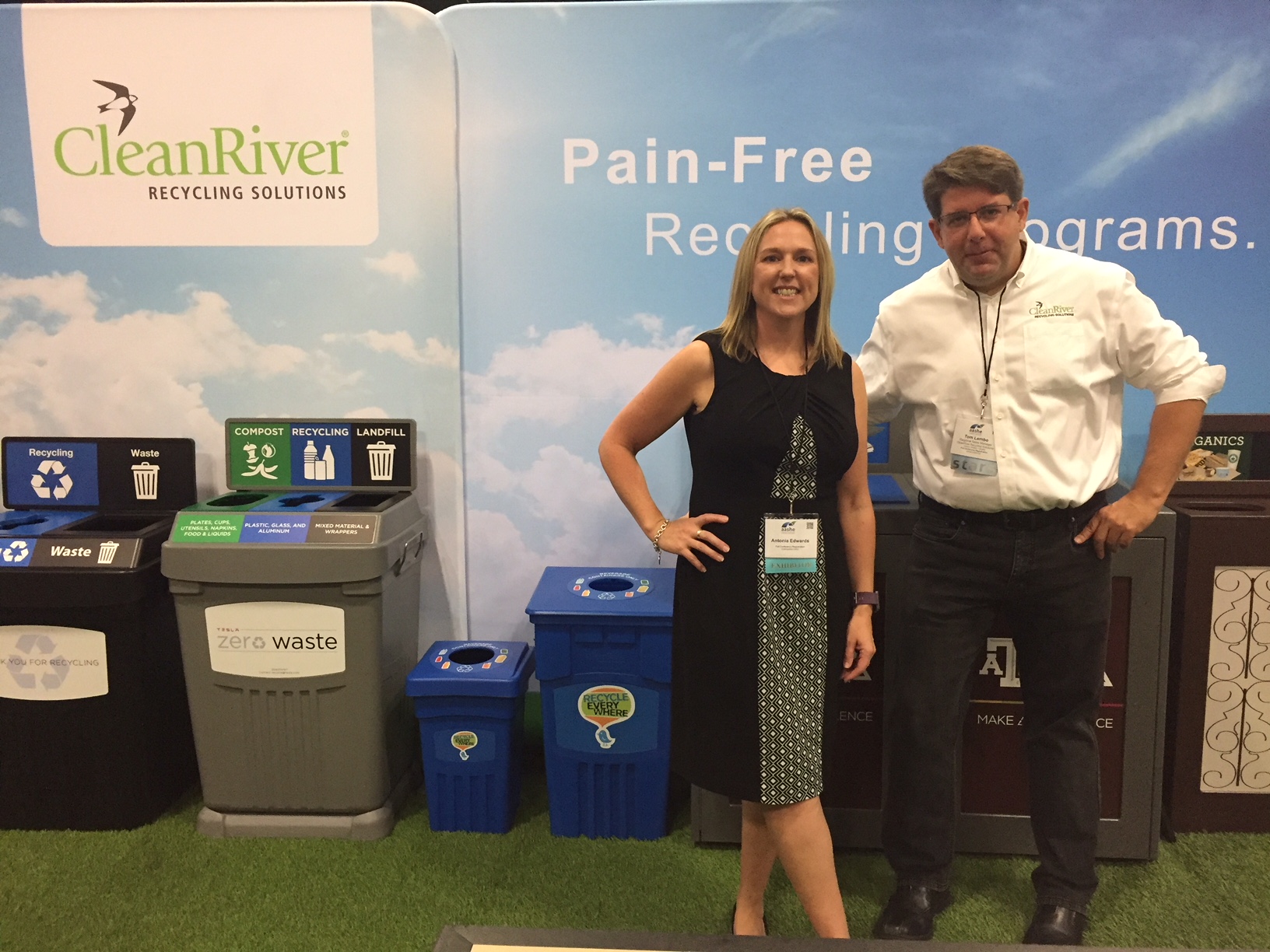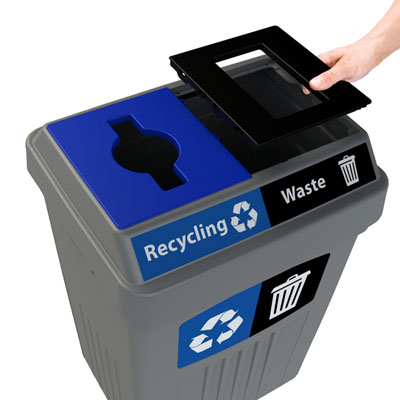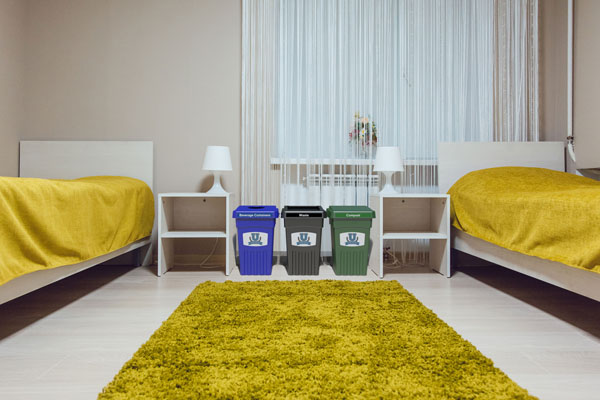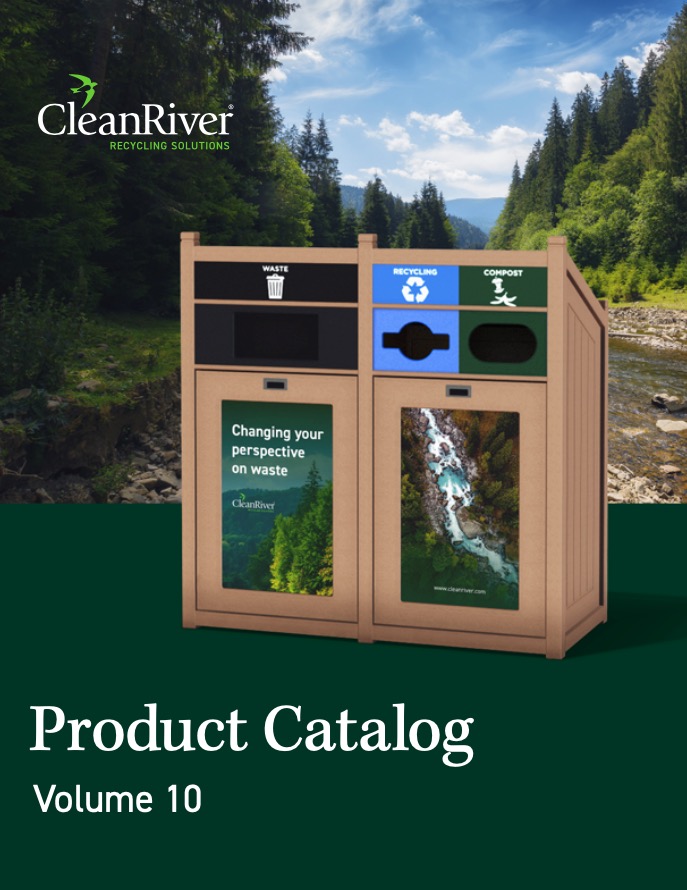Share
Last week I travelled to San Antonio, Texas for The Association for the Advancement of Sustainability in Higher Education (AASHE) 2017 annual conference. I met with a lot of people who are passionate about sustainability and who are involved in the recycling efforts on their campus. What I found was that a lot of these individuals were asking very similar questions about how to implement effective indoor & outdoor recycling programs. So, I thought I would put together a round-up of the top questions regarding campus recycling programs, and our responses, in case you’ve been asking the same things.

Question 1: How Do I Motivate Students To Participate In Campus Recycling?

This was by far the most asked question, and what surprised me was that I was being asked this by students. If they don’t know how to engage their peer group who does?!
Well I didn’t have to look far; CleanRiver’s CEO Bruce Buchan has been in the industry for 28 years. You could say he’s seen a thing or two.
“The first thing for an effective recycling program in any organization is culture. It’s the number one driver of program participation” says Buchan.
“Essentially recycling programs must be driven from the top down. It’s nearly impossible for the sustainability team or a student led initiative to drive culture change from the bottom up. You need to work with your administration to get them to lead by example. Then everyone else will fall in line.” says Buchan.
Read our recent blog post on 3 Ways to Convince Your Boss to Start a Recycling Program for some tips on how to get your leaders on board.
Communication is also key. With students hailing from different regions and cultural backgrounds it’s important to let freshman students know about your recycling expectations as soon as they arrive on campus. Tell them what’s recyclable, where the indoor recycling bins, where the outdoor recycling bins are, and what your campus diversion rate goals are. This will help them understand how to recycle effectively.
Question 2: What’s The Deal With Restrictive Openings On Recycling Bins?
Restrictive openings can be effective in helping people make the right decision when faced with which stream to deposit their waste. The problem with restrictive openings is that they can sometimes cause collection issues.
An interesting example from one of my conversations at AASHE, was where a campus had recently ordered new fan cups for their sports facilities. At the first game however, they discovered the rim of the cup was the same circumference as the opening for the recycling bin. This meant that the first person who tried to recycle the cup jammed the opening of the bin and then all fan cups were piled up around the bin or made their way into the trash stream.
A similar event recently occurred to a CleanRiver client. Recyclable clamshells were introduced to the salad bar in their campus cafeteria. The clamshells however were too large to fit into the saturn-shaped opening of the recycling bins. So unfortunately people had no choice but to toss them into the landfill trash. Luckily this campus was able to retrofit their CleanRiver recycling bins by simply replacing the opening plates.
Pro Tips for restrictive opening success:
- Identify what kind of trash is being generated on campus so you can ensure the openings accommodate the recyclable items.
- Have bins that have the ability to be retrofitted when your program changes.

Question 3: How Do We Set Up A Dorm Room Recycling Program?

Dorm rooms are a big generator of recyclable waste, think beverage containers, pizza boxes and paper to name a few. Learn more about the BevvyBin and its unique application for schools and campuses.
Many campuses are struggling to engage students in taking their recyclable waste to central recycling stations.
Here are few top tips on how to motivate students to recycle effectively in their dorm, from CEO Bruce Buchan:
- Include recycling as part of the student communications for Freshman students as soon as they arrive on campus. Make recycling expectations clear.
- Have clear communication on the dorm room bins of what should be tossed in that bin. Use images to help students make the right choice
- Incentivize students to take the recycling bin to the sorting station. Provide food tokens for the cafeteria for example.
- Have a merit system for students who take their recycling to the central stations and allow them to earn a credit at the end of the year. You can fund this with the money saved on tipping fees.
Question 4: What’s The Best Signage To Use On Recycling Bins?
We were asked this question A LOT. A study performed by University of Toronto showed that effective signage can increase diversion rates by up to 163%.
At CleanRiver, we suggest bin signage should include facility specific waste images to help people make the right choice, as pictures are more effective than text alone.
But be careful! Don’t go overboard on the number of images because then it becomes too confusing.
As a rule of thumb try to stick to no more than 6-8 images per stream.
Remember to keep updating your graphics as your program changes. Communication is key in helping people use the bins effectively.
Watch this quick video to learn more about effective recycling graphics.
If you have additional questions that weren’t answered in this blog post please call us at 1-888-646-4246 or email solutions@cleanriver.com.
For more information on effective campus recycling check out our previous blog posts 10 Tips for Campus Recycling Success and Solutions for Campus Recycling Program Funding.

